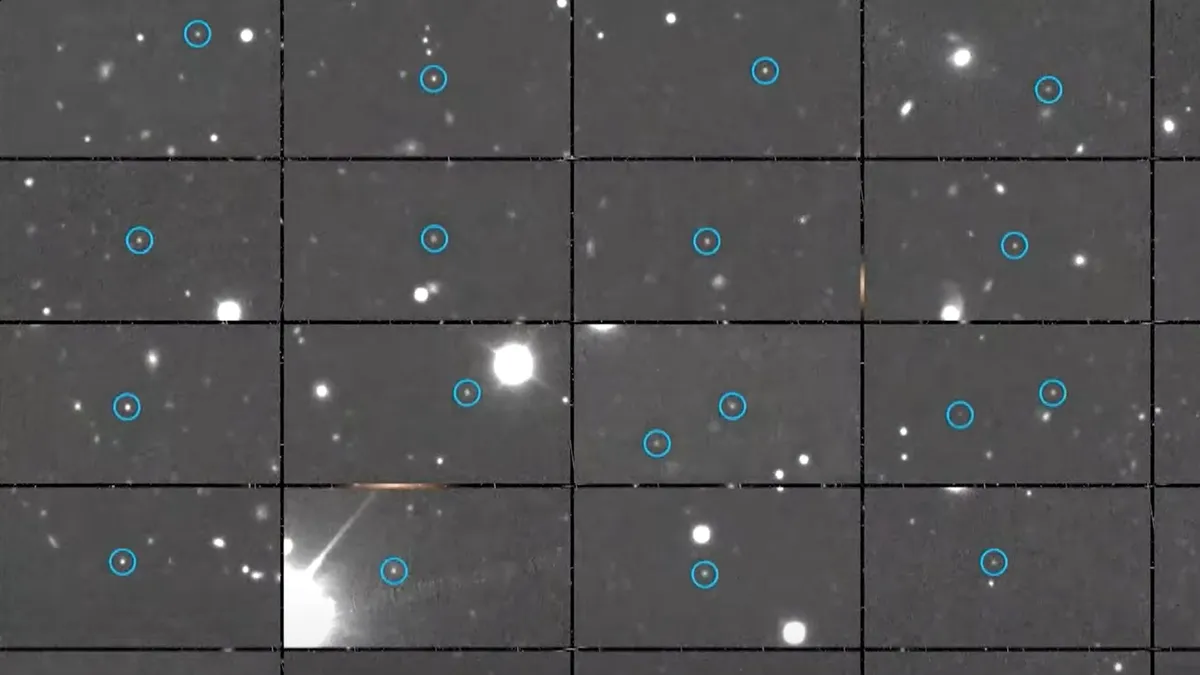
On June 23, an emotional atmosphere filled the air as the Vera C. Rubin Observatory unveiled its first images during a much-anticipated conference. Among the grainy white specks that danced across the computer screen were representations of 2,104 newly discovered asteroids. This remarkable achievement was made possible by the observatory's innovative technology, and it felt like a pivotal moment in our understanding of the solar system.
In just a few nights of data collection, the Rubin Observatory team identified a staggering number of asteroids, including seven categorized as near-Earth objects. Thankfully, none of these asteroids pose any threat to our planet. To put this into perspective, there are currently about a million known asteroids in our cosmic neighborhood. The Rubin Observatory could potentially increase this number to five million within the next few years, a remarkable feat considering that astronomers have discovered only a fraction of this amount over the past 200 years. As Željko Ivezić, the Deputy Director of Rubin's Legacy Survey of Space and Time, stated, "We can outdo two centuries of effort in just a couple of years." This accomplishment serves as an impressive first impression of the observatory's capabilities.
One of the standout features of the Rubin Observatory is its ability to not only capture images but also to format these discoveries as movies. Located at the El Peñón peak of Cerro Pachón in Chile, the Rubin Observatory utilizes the world’s largest digital camera, allowing it to capture vast sections of the night sky in stunning detail. One of its initial images showcased a mesmerizing array of hazy galaxies, yet this is merely a fraction of what the observatory can capture. The plan is to produce massive, high-resolution images of the southern sky every three nights for at least the next decade, making it an exceptionally fast and thorough cosmic imager.
Rubin's advanced imaging technology is particularly adept at detecting small celestial bodies like asteroids. As Ivezić explained, "We make movies of the night sky to see two things: objects that move and objects that change brightness." Asteroids, which move rapidly compared to stars, can be challenging to capture. However, the observatory's software can isolate and track these fast-moving objects, facilitating detailed analysis. When examining one of the Rubin images, different colors represent various exposures used to create the final image, effectively stitching together a visual narrative of the asteroids' trajectories. This capability not only enhances scientific research but also plays a crucial role in planetary defense.
In recent years, the need for effective planetary defense strategies has gained significant attention. NASA's DART (Double Asteroid Redirection Test) mission, which aimed to alter an asteroid's trajectory through a kinetic impact, has spotlighted the importance of protecting Earth from potential asteroid threats. Additionally, recent discussions surrounding asteroids like 2024 YR4, which had a momentarily concerning likelihood of impacting Earth, have underscored the urgency for robust asteroid detection systems. During a hearing by the U.S. House Committee on Space, Science and Technology, concerns were raised about potential funding cuts impacting asteroid defense initiatives. In this context, the capabilities of the Vera C. Rubin Observatory are welcomed by the scientific community.
Ivezić highlighted the expansive potential of the Rubin Observatory by presenting a simulation of all asteroids expected to orbit the sun. He noted that the new discoveries made by the observatory represent just a narrow slice of this vast cosmic "donut." As the Legacy Survey of Space and Time (LSST) begins later this year, the observatory is poised to unveil millions more asteroids in the coming years, marking a new era of understanding our solar system.